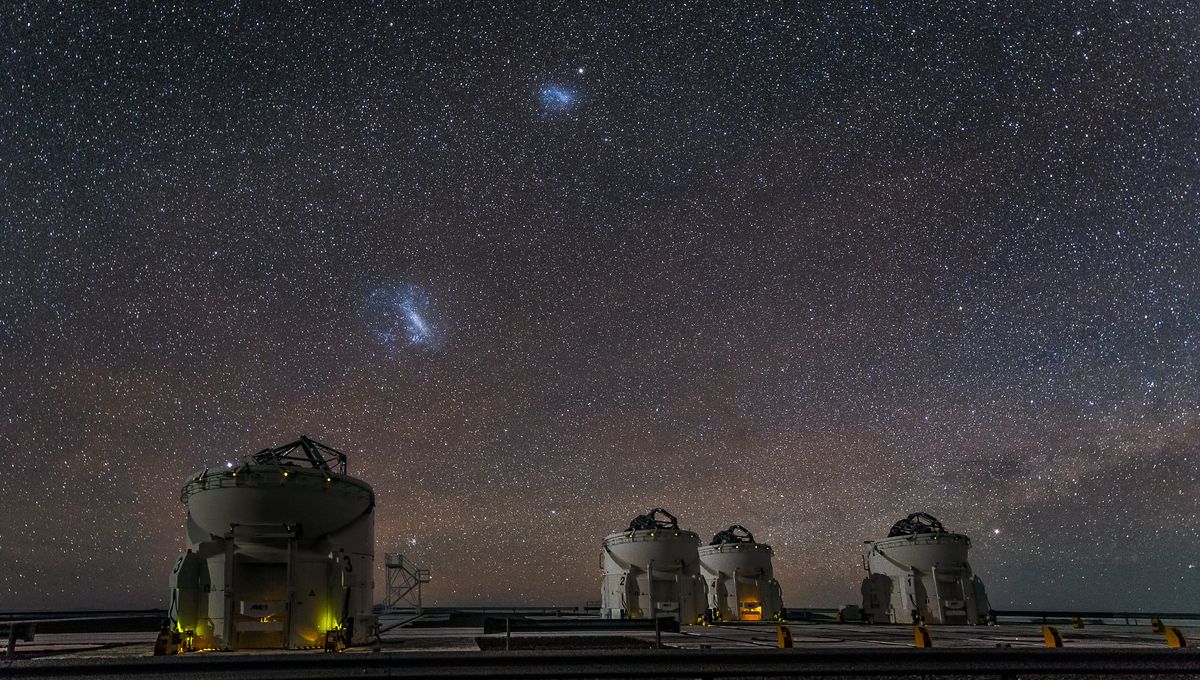
If you live in or have ever visited the Southern Hemisphere, you might have seen in the night sky two patchy white collections of stars off the main body of our galaxy, the Milky Way. These are two of the several dwarf galaxies orbiting our own and are called the Large Magellanic Cloud (LMC) and Small Magellanic Cloud (SMC). Their names, however, are now being called into question by astronomers uncomfortable with their eponym.
These two astronomical objects are named after Ferdinand Magellan, the Portuguese explorer whose crew became the first to circumnavigate the globe. Magellan and his crew conducted an incredible feat of exploration, but they enslaved and killed indigenous people in Argentina, Guam, and the Philippines while doing so. For these reasons, astronomers are calling into question why these two celestial objects should be named after a colonizer, slaver, and murderer, particularly as there is precedent for renaming cosmic objects when a name has become insensitive or problematic.
“Renaming is not a new fad in astronomy. In 2018 the IAU [International Astronomical Union] renamed the ‘Hubble Law’ to the ‘Hubble-Lemaître Law’ to acknowledge the scientific contributions of Georges Lemaître,” Professor Mia de los Reyes, from Amherst College, who first called for the name change in an opinion piece in Physics Magazine, told IFLScience.
“Renaming the LMC and SMC would similarly acknowledge the contributions of the Indigenous communities who identified and observed the Clouds long before Magellan.”
Magellan was not an astronomer and was not the first one to see or record the Clouds. Humans in the Southern Hemisphere have been looking at them for tens of thousands of years, and there are historical names and stories associated with them across the world that predate the description from Magellan’s scribe. Magellan’s description was not even the first to reach Europe from people in the Northern Hemisphere. Both Italian and Arabic sailors reported them at least a decade before the Magellan expedition.
Given that the scientific method is (in the ideal case) changing one’s mind when presented with new correct data, it is not surprising that objects get renamed when new information comes to light. Famously the first provisional name of Arrokoth, the most distant world visited by a human spacecraft, was at first called Ultima Thule – the nickname of the far distant fictional land in old maps. Unfortunately, it was also a name associated with the Third Reich and was duly renamed.
Back in 2020, the IAU and NASA decided to abandon nicknames for celestial bodies steeped in colonialism, racism, and other forms of discrimination. The organizations called for the use of scientific designations for several objects with offensive nicknames, for example, nebula NGC 2392, which had been nicknamed the colonial term “Eskimo”. The group calling for the renaming of the LMC and SMC says that asking for neutral scientific names should not be controversial.
More recently, a petition by astronomers to rename the then-upcoming JWST telescope due to the eponymous James Webb’s links to the US government’s purge of LGBT civil servants from federal jobs in the 1950s and ’60s when he was NASA administrator led to a full investigation by the space agency. In that case, however, despite the controversy and large opposition in the astronomy community, it decided to stick with the name.
“Nearly all the astronomers we’ve talked to have been supportive of renaming, so most of the pushback we’ve received so far has been from a vocal minority of the general public,” Professor de los Reyes told IFLScience.
“I’ve gotten a few emails telling me to ‘go back to doing science.’ To these folks, I would say: nomenclature is part of science, and science embraces progress.”
As de los Reyes points out in her opinion piece, naming things in the night sky, which belongs to everybody, should reflect all of humanity. Naming monuments, facilities, objects, and missions after individuals will always be complicated, she says. One nation’s hero may be another nation’s villain, but attempts should be made to rectify using names that may represent some people’s most painful periods in history, and this also shouldn’t be controversial.
“The night sky is for everyone, regardless of nationality or race or background. But professional astronomy has been built on sociocultural structures, like colonialism and imperialism, which have made it unwelcoming to people from certain communities—for example, people from Indigenous communities and people from the Global South,” de los Reyes told IFLScience.
“Changing these naming conventions is one small way to help make astronomy a little more open to these historically overlooked communities. Of course, it won’t solve every issue of access and inequity in astronomy, but it’s certainly a start.”
You can read the full opinion piece by de los Reyes here.
Source Link: It’s Time The Magellanic Clouds Are Renamed, Astronomers Say